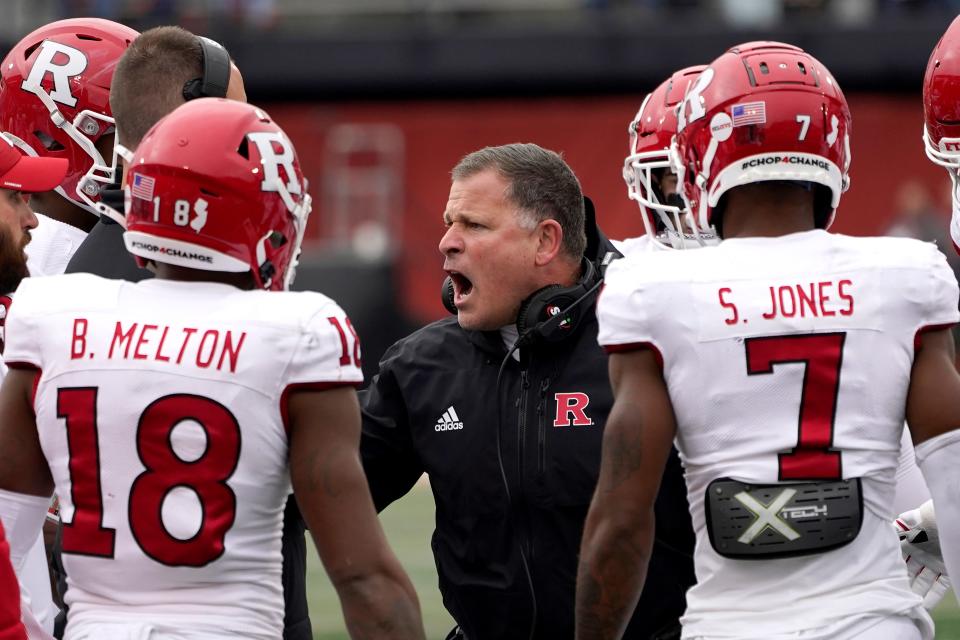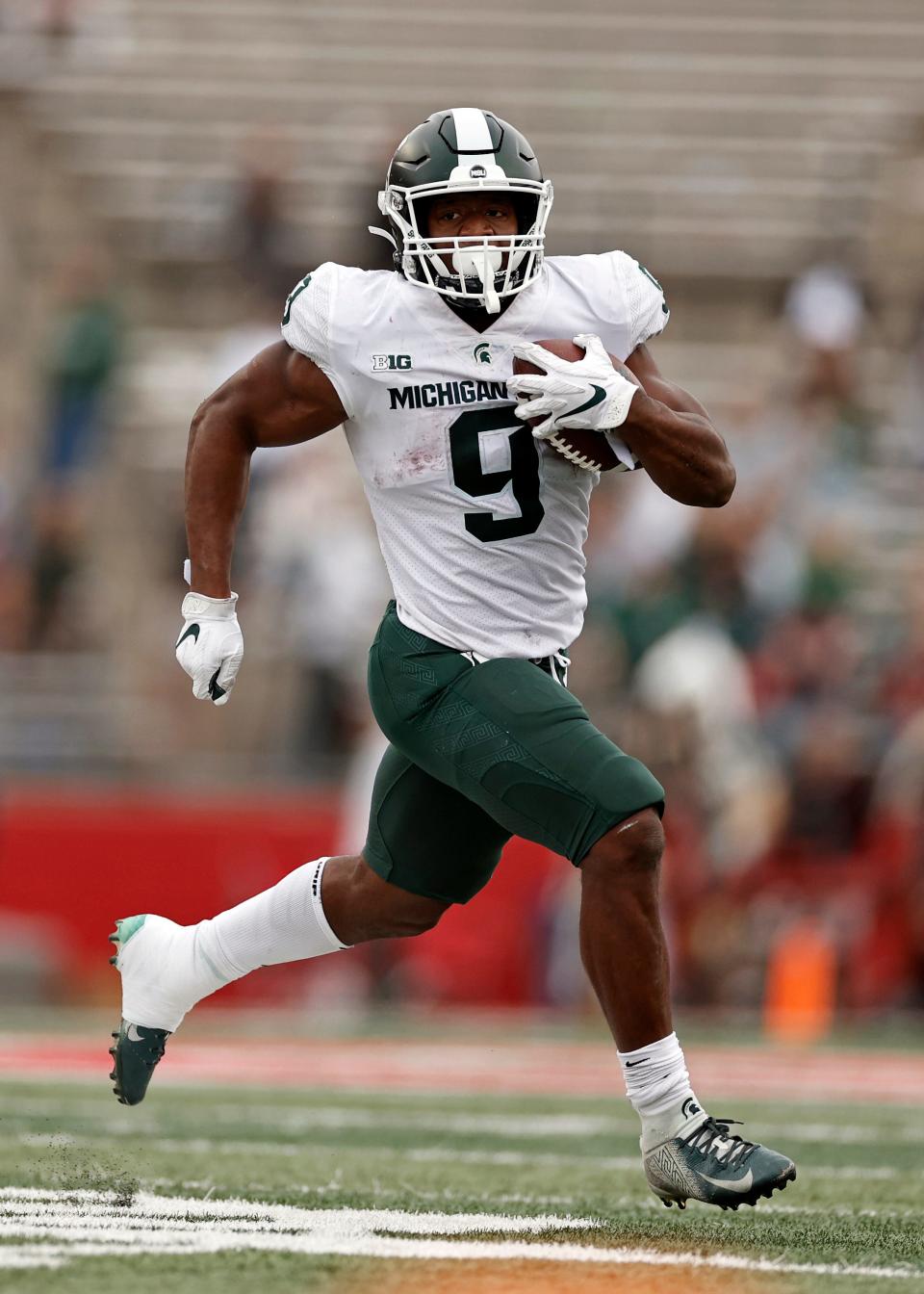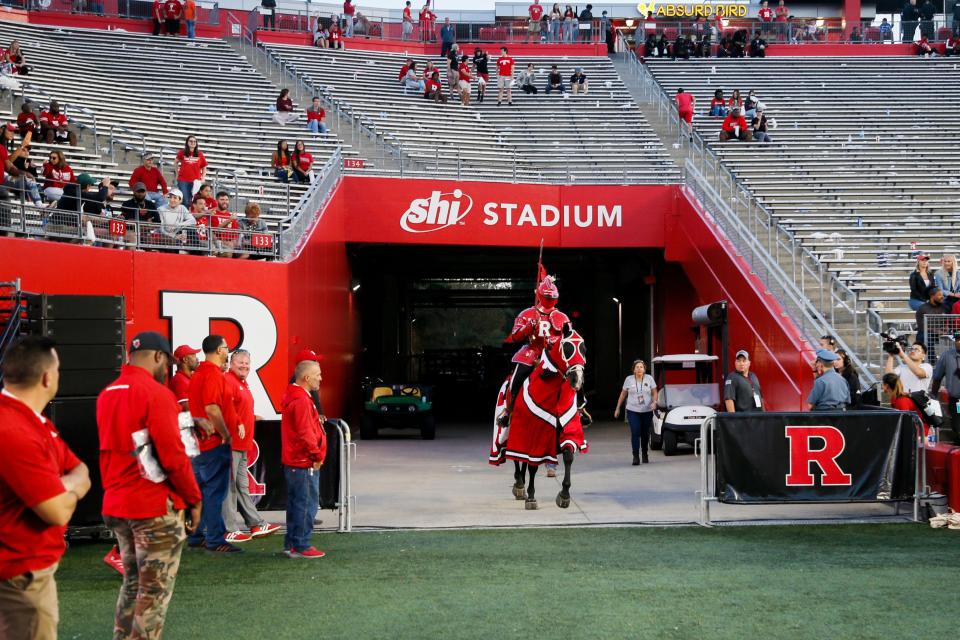Amid Rutgers football ticket revenue woes, school plans $150 million training complex
While the Rutgers University football team has been playing home games in a half-empty stadium this season, its heavily indebted athletics division has quietly pushed ahead with plans for a pricey new football operations center and indoor practice facility, paying an architect to design the project and create renderings it can use to recruit new players.
The return of head coach Greg Schiano has produced a more competitive football team but has not drawn enough fans to come close to filling its 52,000-seat stadium, even though Rutgers has hosted some nationally-ranked opponents in the Big Ten Conference. Rutgers has averaged fewer than 30,000 fans in the stadium for each home game and its season ticket sales are more than a third less than they were in the university’s second year of play in the conference.
The university has called the football project — which early estimates put at $150 million — “a top priority,” and promised Schiano in his contract that it would move ahead with planning “as soon as reasonably practicable.” At the same time, Rutgers is under pressure to complete substantial improvements to its basketball arena — or build a new one — within seven years, according to a contract it recently signed with Jersey Mike’s for the arena's naming rights. According to the contract, the university “intends to begin pursuing such a renovation or new Arena within the next several years.”
The two projects alone have the potential to double Rutgers’ athletics debt — to half a billion dollars.

An investigation by NorthJersey.com and the USA TODAY Network New Jersey revealed earlier this year that the athletics division has been borrowing heavily from university funds and from the Big Ten Conference to paper over operating budget shortfalls that reached $73 million in the 2019-2020 fiscal year. Rutgers athletics had been hiding its true operating deficits by counting loans as revenues. In the wake of the COVID-19 pandemic, the 2021 fiscal year may have been its worst yet. Rutgers has declined to release financial information for that year.
The athletics division has accumulated $265 million in debt. That includes loans taken from the university — $84 million to pay its annual operating deficits over six years and tens of millions more for capital expenses. University President Jonathan Holloway has said Rutgers is considering forgiving the deficit loans.
A recent athletics document shows that Rutgers is already taking over some of athletics’ other debt. A $2 million loan to cover costs associated with the Big Ten Network did not appear on last month’s athletics debt schedule, although it had been in a similar document in May and in a cash flow statement provided by the university over the summer.
‘Unsustainable’: How Rutgers athletics quietly racked up $265M in debt
'Takes your breath away': Murphy calls Rutgers athletics' financial woes 'concerning'
“The university has paid off that loan,” Dory Devlin, a university spokeswoman, said in an email. “We determined it was a cost of joining the Big Ten and should be the university’s responsibility using its general reserves.”
The university previously paid $16 million for various athletics department costs, including a portion of the exit fee when Rutgers left the Big East Conference — which had originally been proposed to be part of the athletics division debt.
Fundraising must cover half
Rutgers said in Schiano’s contract that it would bring the football fieldhouse project to the university Board of Governors for approval once half the money had been raised in donations. That could easily exceed what the university collected from donors for all its athletics capital projects over the past decade.
An authorization letter from November 2020 obtained by NorthJersey.com shows the university gave Populous, an architectural design firm, the go-ahead to plan for and design the new football facility “to be located adjacent to the existing practice fields.” The three-phase agreement called for the firm to create renderings and a video animation, conduct meetings with coaches and others, and assist with cost estimates. The firm was to deliver a final draft of the conceptual design package by April.
Invoices received through a public records request show $155,454 for the project had been billed to the university as of June. At that time, the first two phases of the project were considered complete and the final conceptual design stage was 95% completed.
Rutgers refused to provide cost estimates for the football fieldhouse project. It also denied a request for project renderings and video. The university said these materials are not public because they are “advisory, consultative and deliberative.”
In correspondence with the university, Populous offered as an option a financial feasibility study for the project — which could consider the cost and anticipated revenues to determine whether the project is viable. Asked for a copy of the feasibility study, Rutgers said it did not have one.
While the men’s basketball team has been selling out its arena in advance of games this year, football is the sport expected to pay the bills for big-time college athletic programs. At Rutgers, football has instead been a drain, losing millions of dollars each year as ticket sales fell off drastically when the team played poorly under former coach Chris Ash — it lost 24 of 27 Big Ten games during his tenure.
Schiano’s arrival was expected to turn that around. But fans couldn’t attend games in 2020 because of COVID-19. And while this season’s per-game ticket revenues have improved from 2019, the year Ash was fired, they are only slightly better than they were in Ash’s two previous seasons and more than a third lower than they were in 2014, Rutgers’ first year in the Big Ten.
Rutgers did not respond to questions about lagging football ticket sales or a request for an interview with Athletics Director Pat Hobbs. During an interview this summer, Hobbs said the program doesn’t have a spending issue, “we have a revenue issue, and to grow revenue, you have to be successful.”
Football, he said, “is a critically important part of that.”
He said Schiano built excitement in his first year back, with three wins on the road during the pandemic — all Big Ten games — and “we’re really excited about the season ahead.”
Ticket sales lag
This season has had highs and lows, and Schiano has implored fans to show up to support the team. But even an announced sellout for Temple, the first home game, wasn't as good as it sounded — there were just 33,000 fans in the stadium. With a 2-5 Big Ten Conference record, Rutgers has not generated enough excitement to fill the stadium, but is coming off a victory against Indiana that has renewed its hopes to get to a postseason bowl game.
An analysis by NorthJersey.com shows:
•Rutgers’ announced attendance — the total number of tickets distributed — has averaged 46,000 through its first four home games. But the true attendance has been about 29,500 based on ticket scanners. That means an average of 16,500 people who bought tickets at full or discounted prices — or received them for free — didn’t bother to attend the games. Against Michigan State, one of the Big Ten’s top teams and currently ranked 7th in the nation, just 24,000 fans were in the stadium.

•Rutgers sold 20,212 season tickets for football this year. That’s more than a third fewer than the 32,695 tickets sold in 2015. It’s an improvement over the 16,863 season tickets sold in 2019 but is less than any other year since 2015 — Rutgers' second season in the Big Ten. Rutgers did not provide season-ticket information prior to 2015. This season, Rutgers has sold an average of 3,000 other tickets per game at full price.
•Rutgers has been averaging $1.24 million per game in ticket revenues. That is significantly better than 2019, when Rutgers averaged $774,583, but is far less than the $1.94 million per game in 2014 when Rutgers first began playing in the Big Ten.
•Student attendance has been averaging just under 10,000 per game, with 7,300 showing up for Michigan State. Rutgers reserves 10,000 seats for students and space for another 2,000 to stand at the games.
Rutgers has not responded to a request for detailed ticket information for its most recent home game, a loss to Wisconsin on Nov. 6, but a document shows it distributed just shy of 40,000 tickets and that 22,591 people were in attendance. There is one more home game remaining this season, Nov. 27 against unranked Maryland.
Rutgers has been counting on increased revenue from ticket sales and a cash influx from the Big Ten — tens of millions of dollars more annually — after becoming eligible for a full share of conference revenue in 2020-21. But it also is repaying $48 million in loans to the Big Ten through 2026.
As Rutgers football struggles to build a larger fan base, the football operations center and indoor fieldhouse is expected to be a priority in a new athletics facilities master plan that has yet to be unveiled.
Hobbs said in the August interview that he expected to deliver that plan to Holloway sometime this fall. Rutgers entered into a $513,287 contract with a consulting firm, AECOM, in January 2020 to assist it in developing the plan.

As part of its proposal for that contract, the firm included more than a half billion dollars in potential capital expenses, including $150 million for the football fieldhouse and operations center, $80 million in improvements to the basketball arena and $80 million in improvements to the stadium — with both venues to include premium seating.
The university did not answer questions posed about the status of the master plan or if it has been presented to the president.
But in the August interview, Hobbs said an indoor practice facility is the “one remaining facility that everybody else in the conference has and we don't have.”
He noted the current indoor practice structure was built in 1986 as a temporary facility.
“That is a great need that we have, and we have to move forward with that,” Hobbs said. “But that's going to take fundraising. That's going to be effort by Coach Schiano, by myself, by Dr. Holloway and by others to make sure that that becomes a reality.”
Rutgers has struggled when it comes to fundraising. It was last among 52 public universities in the five richest conferences in donations to athletics for operations in 2019-20. It raised $50 million in pledged donations for two of its largest projects — a basketball practice facility and an academic support center for athletes — but that covered just one-third of the costs.
The total amount of donations collected by the university for athletics capital projects came to a little less than $84 million from 2012 through the middle of this year, according to a NorthJersey.com analysis of fundraising information that was provided through a records request.
Hobbs said this summer that he anticipates donor support for athletics will grow as recent investments in facilities, coaching staff and more pay off.
“I believe we will have tremendous success in the years ahead in fundraising — we're going to, we're going to exceed what we've done in the last five years, by an order of magnitude of at least twice,” Hobbs said.
This article originally appeared on NorthJersey.com: Rutgers football training facility a priority amid tickets woes

